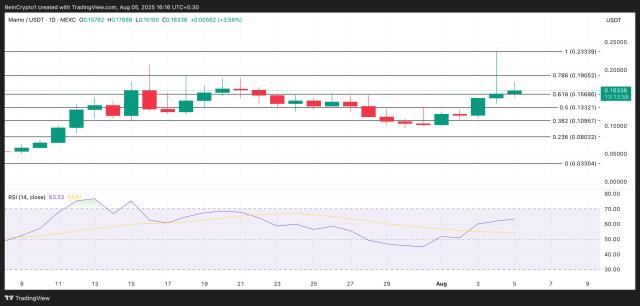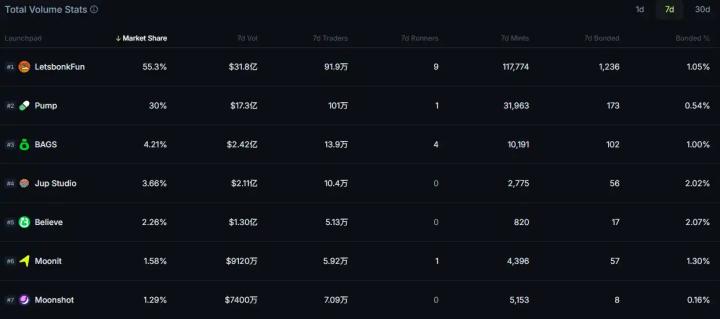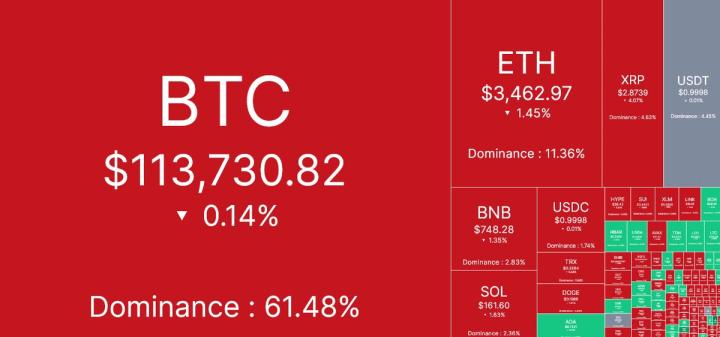Author: Zhang Feng
According to publicly available data, the global RWA market size has exceeded $10 billion by mid-2025, growing rapidly since 2022 and becoming one of the fastest-growing tracks in the crypto field. This explosive growth is the result of multiple forces working together across technological iteration, regulatory gaming, industrial transformation, and capital pursuit.
Who is laying out the RWA market? Perhaps we need to sort out the strategic intentions and action logic of key participants from this complex ecosystem - including technology developers betting on the future, regulatory agencies vying for institutional dividends, traditional industries seeking solutions, and global capital pursuing returns. These forces collectively constitute the underlying support system of the current RWA market.

I. Technology Ecosystem Foundation: Building Next-Generation Financial Infrastructure
In terms of technological development, the core forces of RWA layout come from technology pioneers and institutional alliances dedicated to building next-generation financial infrastructure. Their investment aims to solve key obstacles to asset tokenization and lay the technological foundation for large-scale RWA applications.
Blockchain Protocol Developers and Cross-Chain Technology Breakthroughs. Ethereum, with its mature smart contract ecosystem, has become the primary platform for RWA, accounting for over half of the market share. Polygon, Solana, Avalanche, and other public chains are competing for incremental markets through high scalability and low-cost advantages. Taking XRPL (XRP Ledger) as an example, the total value of tokenized assets in its ecosystem surged from $5 million to $118 million in the first half of 2025, demonstrating the significant pull of technological optimization on asset tokenization. These underlying protocols' continuous evolution provides a secure and efficient on-chain operating environment for RWA.
Technology Departments of Traditional Financial Institutions. According to public information, BlackRock's BUIDL fund manages $2.9 billion in tokenized government bond assets through multi-chain deployment, occupying 44% of this market segment. JPMorgan completed over $1.5 trillion in distributed ledger (DLT) payments and settlements using its self-developed Kinexys platform and collaborated with Chainlink to pilot cross-chain RWA pricing. These institutions bring asset management and risk control experience from traditional financial markets into the blockchain field, significantly enhancing the credibility and acceptability of RWA products.
Compliance and Security Technology Providers. Privacy computing technologies (such as zero-knowledge proofs) have made breakthroughs in solving RWA commercial secret protection issues. Some companies have developed anti-quantum cryptography technologies that enhance the security of on-chain assets. Chainlink's compliance tools are said to reduce the cost of traditional financial on-chain connection by 90%. These technological innovations address the core pain points of RWA institutional implementation - how to maintain transparency while meeting commercial confidentiality and compliance requirements.
The layout logic of the technological camp is gradually becoming clear. By pre-positioning infrastructure, they aim to occupy the core position in the value chain of the upcoming trillion-dollar RWA market. McKinsey predicts the RWA market size will reach $4 trillion by 2030, while Boston Consulting Group's optimistic estimate even reaches $16 trillion. Facing such a massive potential market, technological investment becomes a necessary early bet.
(Note: The translation continues in the same manner for the rest of the text, maintaining the specified translations for blockchain and crypto-related terms.)In terms of investment demand, RWA layout participants can be divided into two major camps: traditional capital seeking stable returns and crypto-native capital pursuing high growth. Their common goal is to obtain a better risk-return ratio through asset tokenization:
Asset allocation optimizers of traditional asset management. Giants like BlackRock and Franklin Templeton are focusing on US Treasury tokenization as a core strategy. The BUIDL fund manages nearly $2.9 billion in assets, while Franklin Templeton's BENJI fund is close to $800 million. These products solve the long settlement cycle (T+2) and low cross-border efficiency of traditional Treasury trading, providing institutional investors with near-real-time asset liquidity and cross-border settlement capabilities.
Efficiency enhancers of private credit. Private credit RWA scale reaches $14 billion, becoming the largest market segment. Platforms like Maple Finance (managing $2 billion) and Morpho (TVL $4.2 billion) restructure credit processes through tokenization: converting loans into on-chain notes, enabling automatic interest payments and secondary market trading; introducing KYC and on-chain audits to enhance transparency; using fixed-rate structures to reduce rollover risks. These innovations have shortened the average issuance cycle of private credit from weeks to days.
Yield seekers of crypto-native capital. DeFi investors have strong demand for low-volatility assets, driving explosive growth in Treasury RWA - from $104 million in 2023 to $7.5 billion in 2025. IXS's BTC Real Yield product offers 4%~10% APY, significantly higher than traditional savings rates. Such products have become a safe haven during crypto bear markets.
International capital track bettors. Barclays Bank's consecutive holdings in Yisou Technology in June-July 2025 demonstrate international capital's recognition of the RWA and AI integration track. This investment logic is not based on short-term profits but focuses on the long-term potential of cultural IP tokenization. Similarly, High West, as a professional digital asset management institution, choosing Guanglian Technology Holdings as a partner in its Bitcoin treasury acceleration program, reflects crypto capital's optimism about automotive asset tokenization scenarios.
V. Diverse Layout Participants Co-shape Ecosystem, Challenges Remain
The explosive growth of the RWA market is the result of joint efforts from multiple forces: technology developers building infrastructure, regulatory bodies providing institutional dividends, traditional industries seeking breakthrough paths, and global capital pursuing allocation optimization. These layout participants have different demands yet are interdependent, jointly promoting RWA from concept verification to large-scale implementation.
However, RWA development still faces multiple challenges: regulatory fragmentation leaves 74% of DLT project participants severely insufficient; technical risks are reflected in frequent cross-chain bridge attacks; insufficient market liquidity results in over half of fixed-income RWA tokens having very low turnover rates; financial stability risks may lead to potential leverage collateral chain disruptions.
Despite this, RWA's role as a bridge connecting traditional finance and blockchain has been verified. With continuous entry of institutions like BlackRock, deepening Hong Kong-Singapore regulatory collaboration, and accelerated on-chain integration of physical assets like automotive and energy, a more open, efficient, and transparent RWA ecosystem is forming. Layout participants from different dimensions will continue investing in the next decade, pushing the $4 trillion market predicted by McKinsey from possibility to reality. Those projects that can balance technological innovation with financial security and balance commercial value with regulatory compliance will become the true winners of this transformation.








